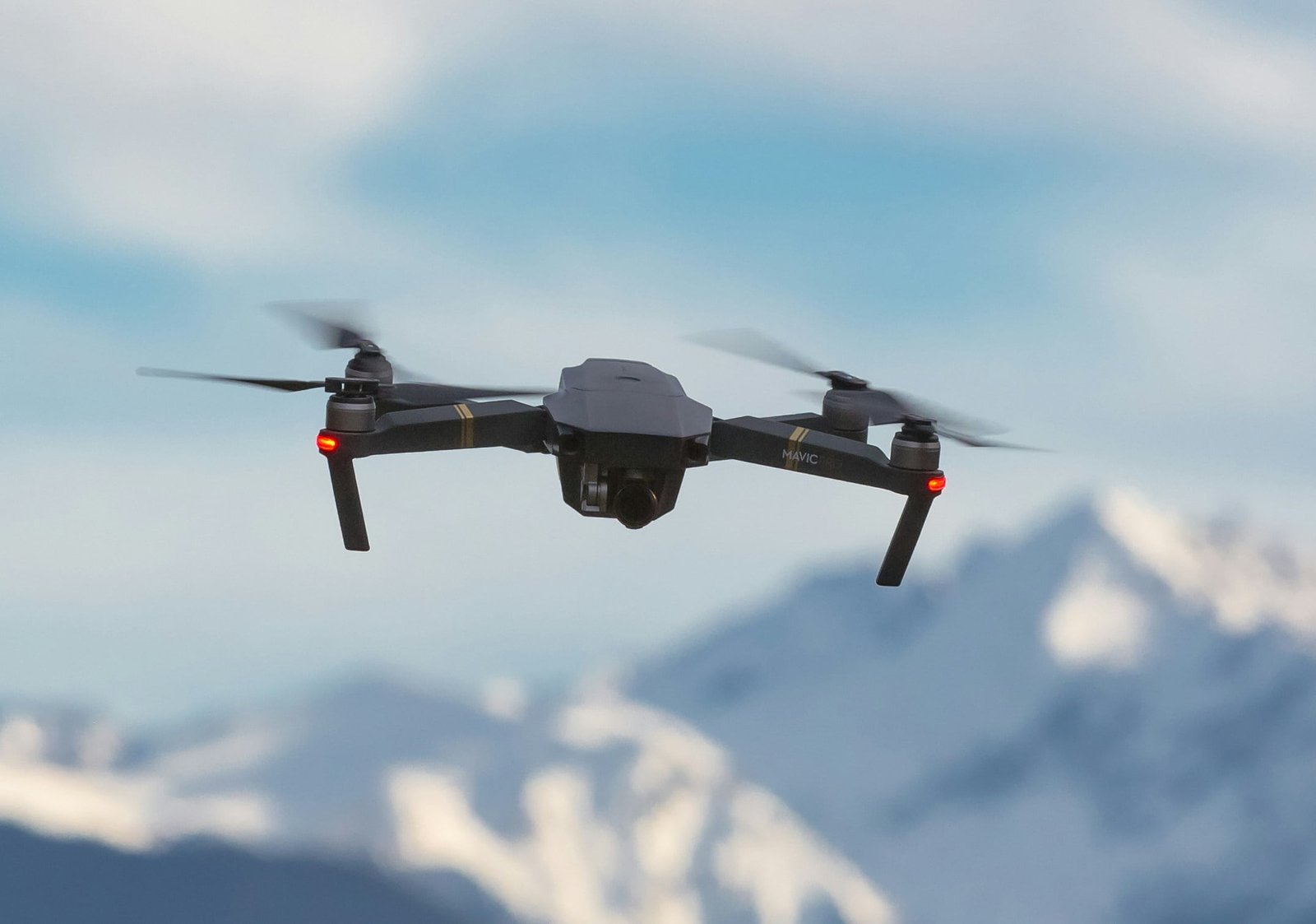When it comes to drones, one of the most common questions is, “How high can a drone fly?” So the simple answer is that the, Military and consumer drones operate at vastly different altitudes. Military drones, designed for missions like surveillance, can reach incredible heights exceeding 60,000 feet. This allows them to gather information from afar without detection. Consumer drones, on the other hand, are restricted to a much lower maximum altitude of 400 feet above ground level for safety reasons. This ensures they don’t interfere with manned aircraft and keeps them within a safe operating range in case of malfunctions.
Drone Legally Flying Range in Different Countries
| Country | Maximum Altitude (AGL) |
|---|---|
| USA | 400 feet (122 meters) |
| Canada | 400 feet (122 meters) |
| UK | 400 feet (122 meters) |
| Australia | 400 feet (122 meters) |
| European Union | 400 feet (122 meters) |
| Japan | 400 feet (122 meters) |
| New Zealand | 120 meters (394 feet) |
| India | 120 meters (394 feet) |
| South Korea | 150 meters (492 feet) |
| China | 100 meters (328 feet) |
| Brazil | 120 meters (394 feet) |
Factors Affecting Drone Flight Altitude
Several factors influence how high a drone can fly. Let’s take a closer look at each of these factors:
1. Regulatory Restrictions
One of the primary factors limiting drone flight altitude is regulatory restrictions. Different countries have their own rules and regulations regarding drone operations. In many places, drones are not allowed to fly above a certain altitude to ensure the safety of airspace and prevent interference with manned aircraft. For example, in the United States, the Federal Aviation Administration (FAA) restricts recreational drone flights to a maximum altitude of 400 feet above ground level.
2. Drone Type and Class
The type and class of drone also play a role in determining its maximum flight altitude. Consumer-grade drones, typically used for recreational purposes, generally have a lower maximum altitude compared to professional-grade drones. This is due to differences in design, power, and technology. Professional-grade drones, such as those used for aerial photography or surveying, often have higher maximum altitudes to allow for more extensive operations.
3. Battery Life and Power
The battery life and power of a drone are crucial factors that affect its maximum flight altitude. Drones rely on battery power to stay airborne, and as the battery drains, the drone’s performance, including its ability to climb to higher altitudes, may be compromised. Additionally, heavier drones with larger payloads may require more power to lift off and maintain flight, which can impact their maximum altitude capabilities.
4. Weather Conditions
Weather conditions, such as wind speed and temperature, can impact a drone’s maximum flight altitude. Strong winds can make it difficult for a drone to maintain stability and control at higher altitudes. Extreme temperatures can also affect battery performance, reducing flight time and overall altitude capabilities. It is important to consider weather conditions before attempting to fly a drone at higher altitudes.
Statistics and Data on Drone Flight Heights
While the maximum altitude of a drone can vary depending on the factors mentioned above, here are some interesting statistics and data on drone flight heights:
1. Consumer Drones
Consumer-grade drones, which are popular among hobbyists and enthusiasts, typically have a maximum flight altitude ranging from 100 to 400 feet. This altitude range ensures compliance with regulatory restrictions and promotes safe recreational drone use.
2. Professional Drones
Professional-grade drones, designed for commercial purposes, often have higher maximum flight altitudes. These drones are built with advanced technology and robust power systems, allowing them to reach altitudes of 500 feet or more. However, it is essential to follow local regulations and obtain the necessary permits when operating professional drones at higher altitudes.
3. Specialized Drones
Specialized drones, such as those used for military or scientific purposes, can reach even greater altitudes. Military drones, for example, are capable of flying at altitudes exceeding 30,000 feet. Similarly, scientific drones used for atmospheric research or monitoring can reach altitudes of 50,000 feet or higher.
Conclusion
The maximum altitude a drone can fly depends on various factors, including regulatory restrictions, drone type, battery life, and weather conditions. While consumer-grade drones typically have a maximum altitude of 100 to 400 feet, professional-grade and specialized drones can reach higher altitudes. It is important to understand and comply with local regulations to ensure safe and responsible drone operations. Always prioritize safety and follow best practices when flying your drone.
Drone Flight Altitude FAQs
Legal Limits on Drone Flight Altitude
- Can a drone fly 20,000 feet?
- Commercial drones can reach up to 20,000 feet, but the exact limit varies by model. Always check your drone’s specifications.
- Can a drone fly 40,000 feet?
- Generally, civilian drones cannot reach 40,000 feet. Military drones can reach much higher altitudes.
- Who enforces drone flight altitude limits?
- Drone Operators: They must follow regulations set by aviation authorities.
- Civil Aviation Authorities: (FAA in US, CAA in UK) Set and enforce altitude limits.
- Geofencing and Software: Restrict drone flight in certain areas.
- Air Traffic Control: May intervene if a drone poses a risk to manned aircraft.
General Drone Flight Altitude Information
- Can drones fly above 400 feet?
- In most countries, no. Consumer drones are limited to 400 feet above ground level for safety reasons. Exceptions may exist with proper authorization.
- How do drones determine altitude?
- Drones use a combination of sensors:
- Barometric altimeter: Measures air pressure to estimate height.
- GPS: Uses satellites for altitude data.
- Radar sensors: Provide precise altitude information.
- Drones use a combination of sensors:
- What is the best altitude for a drone?
- It depends on the purpose of the flight.
- Recreational/photography: 100-200 feet for detailed shots.
- Aerial mapping: Higher altitudes for larger coverage.
- It depends on the purpose of the flight.
- How far can a drone fly up in the air?
- Depends on battery life, type of drone, and flight conditions.
- Consumer drones: A few kilometers.
- Long-range drones: Tens of kilometers.
- Depends on battery life, type of drone, and flight conditions.
- What does a drone see from 400 feet?
- Sweeping aerial views, landscapes, unique perspectives.
- Objects appear smaller, providing broader context.
Different Drone Types and Maximum Altitude
- Toy drones: Up to 100-150 feet
- Recreational/hobbyist drones: Up to 6,000 feet above ground level
- Racing drones: 100-200 feet above ground level
- Commercial drones: Up to 22,000 feet (highest flyers)
- Police/government drones: 11,200 feet above ground level
- Military drones: Exceed 50,000 feet
Maximum Altitude
- How high can I legally fly a drone?
There are regulations on how high you can fly a drone for recreational purposes. In many countries, the standard limit is 400 feet above ground level (AGL). Are there any exceptions to this limit in your area?
Range
-
What is the highest range of a drone? The maximum range of a drone depends on several factors, including battery life, signal strength, and weather conditions. How does battery life impact the range of the drone you’re interested in?
-
How far can the biggest drone fly? Larger drones tend to have longer ranges due to bigger batteries and more powerful motors. However, range isn’t everything. What features are most important to you in a drone, besides range?
DJI Drone Limits
- Do DJI drones have a height limit? Yes, many DJI drones have a pre-programmed altitude limit set in the software.
- Can this limit be adjusted, and if so, is it legal to do so in your area?
- (Warning: Modifying these settings may be illegal and could compromise the safety of your drone.)

